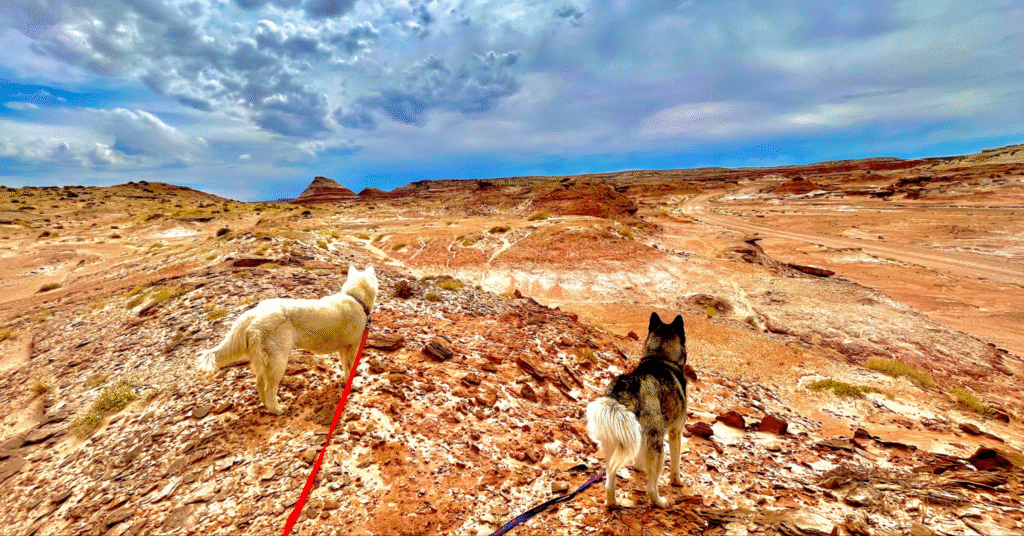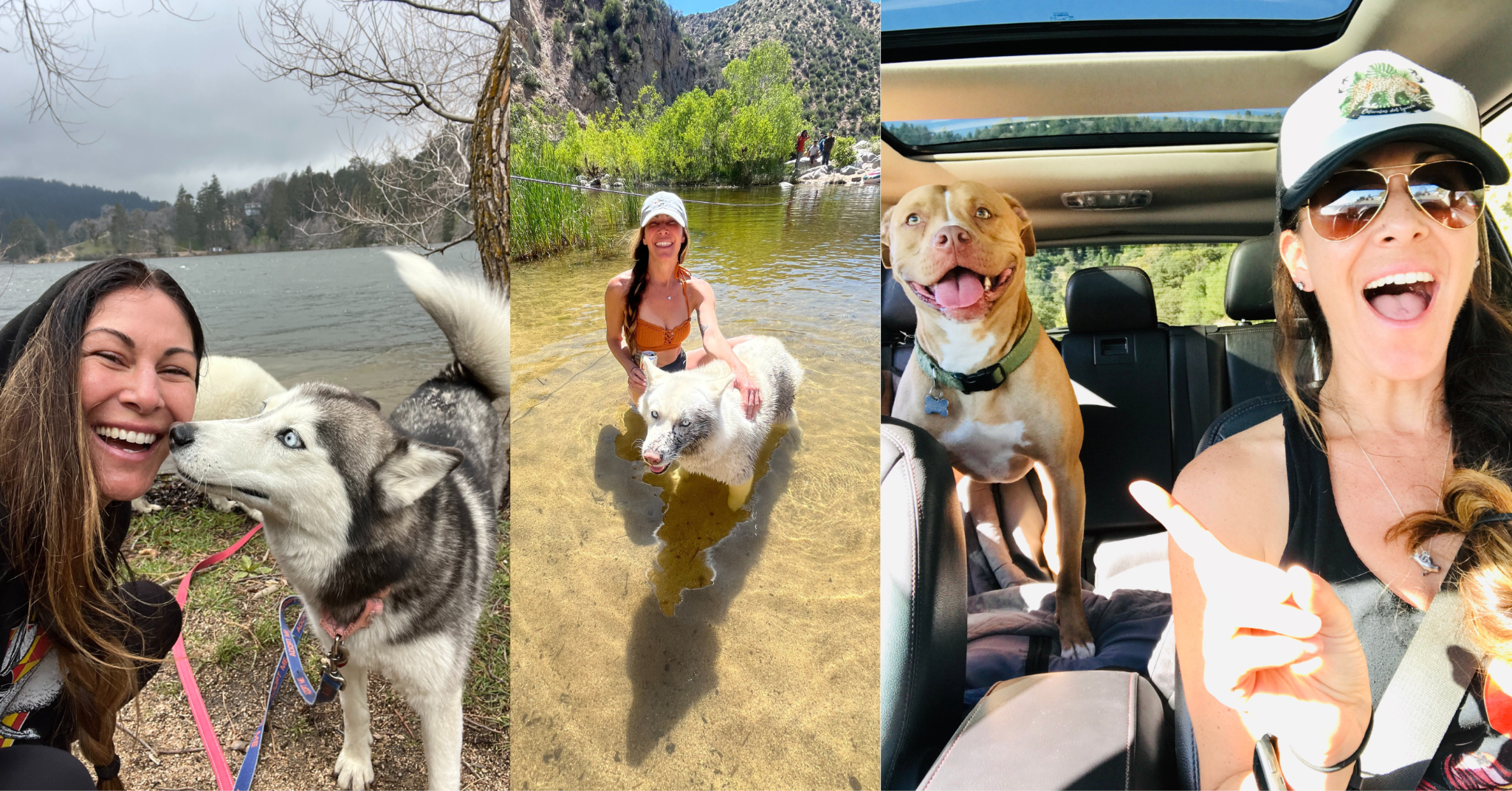Save a life without a forever commitment. Valerie Gomez’s foster lifestyle shows how to give big dogs the second chance they deserve, while unleashing love and joy.
Los Angeles shelters are bursting, and big dogs wait the longest. That’s where Much Love Animal Rescue steps in.
In January 2025, when wildfires displaced families and pets, the group rapidly scaled to take in “fire dogs,” mobilizing fosters and donors within days. The virtual organization is people-driven with no central office; however, many of the foster parents reside on the Westside of LA.
Founded in 1999, the volunteer-run nonprofit places roughly 75 dogs a year through a citywide network of fosters, prioritizing seniors and medical cases—the very dogs most at risk.
Since its inception, Much Love has placed more than 3,500 animals in loving homes, drawing dogs primarily from L.A. County’s six public shelters, plus occasional strays and surrenders when capacity allows.
One of those lifesavers is Valerie Gomez, a creative professional who has fostered continuously since 2016. She splits time between a home base and a boat in Marina del Rey, hikes Big Bear for weeks at a time, and still makes room for large-breed fosters—often the toughest cases.
She’s shepherded shy seniors, medical needs dogs, and even a bonded husky duo, Maya and Star, who finally found the right adopter on Christmas Eve 2024—after nearly three years with Val.

Her approach answers every common “I can’t foster” objection with lived proof that you can.
Nikki Ferraro, co-founder of Much Love, says, “Fosters like Valerie are the heart of our organization—especially for big dogs, seniors, and medical cases. You don’t need a giant house or a wide open calendar. You need empathy, structure and a willingness to learn.”
Today, we sit down with seasoned “foster ma” Valerie Gomez to tackle the most common questions people have about fostering—especially when it comes to big dogs.
Follow along for one woman’s real-world playbook on changing big dog futures.
Q&A with Valerie Gomez
What first pulled you into fostering—and why are you still doing it nearly a decade later?
Valerie: I came in with a simple love for animals. What I didn’t expect was how much fostering would give back to me—community, purpose, and the joy of watching a dog transform in real time. I tell people, I’m forever grateful I stepped into the unknown. Some of my best memories and closest friends came through this work. That’s why I’m still here.
People worry they’ll fall in love and be wrecked at goodbye. How do you actually handle that?
Valerie: I do fall in love. I cry at hand-offs. But I also believe I’m a bridge, not a destination. Maya and Star—the bonded huskies—are my favorite examples. They needed time, training, and the right adopter who could love both of them. That match took almost three years. When they left on Christmas Eve, I sobbed…then slept like a baby because they were home. The love doesn’t end; it multiplies. And then I’m ready for the next dog.
You foster large breeds while living part-time on a boat. Isn’t space a deal-breaker?
Valerie: Space is less important than structure. My big dogs do great because their needs are met: predictable routines, exercise and enrichment. On the boat, that means quiet, safe spots to settle; on land, it’s hikes and calm exposure to new experiences. If you can fit a dog in your heart, you can fit a dog in your home. The walks and hikes end up benefiting all of us. Fostering is a Win-Win.

Walk us through your intake-to-adoption playbook. What does the first month look like?
Valerie: The first week is about letting them decompress, feel comfortable and safe. It’s best to start by familiarizing them with schedule, routine, in-home manners and boundaries. On day one, we start with a good, long walk. We have to remember they have been in shelters, living on the streets, neglected, abused, and they may not know some basics—and it’s not their fault. The first intro in the home is important, so I leash-walk them around the house to observe and correct any immediate boundaries needed. From that point, mi su casa es su casa.
By the second week, you’re more familiar with their personality, any fears, triggers, strengths or weaknesses. I help them at their pace and that’s when we start to see real transformation. Each rescue animal has its own past, and needs are situational. Some of our rescues may need crate training to help them feel safe and/or help them find their calm. Some of our fosters just need a loving human to help them come out of a shy or fearful shell.
You can literally see the fear fade and the joy come through. One of my huskies, Sky, was terrified of stairs—three steps felt like Everest. Initially, I would carry her up the stairs, and little by little, her confidence grew. A week later she trotted up them on her own and looked back like, ‘Did you see that?’ That’s the moment you live for. It’s about building trust so the right family can see who they really are.
After that, the real fun starts. From there, we stack new experiences: beach smells, gentle car rides, meet-and-greets with known calm dogs, and easy hikes. Seeing their progress, their confidence build, fears fade away, and the way my fosters build trust, joy and love is the sweetest experience—and it’s what helps them get adopted.
You travel for work. How do you make fostering compatible with a busy calendar?
Valerie: That’s the additional beauty in fostering and having such a great support village like Much Love. If I ever have to travel for work, for personal or need any days/nights covered, we have a great roster of other fosters to help in times of need. I genuinely love including any dogs I’m fostering in my everyday life, and I want to be away from them as little as possible. My fosters are typically my +1 or +2 if it’s up to me. But yes, daily life calls, and when it does, our Much Love team springs into action. Fostering is flexible when the rescue knows your reality.
Why haven’t you adopted one of your fosters?
Valerie: Because my lane is fostering, at this time. I’d keep them all if I could. Due to my current living situation and lifestyle, I see myself as the in-between stop that changes outcomes for dogs who need that bridge. Once my lifestyle is more grounded, I will definitely have my own forever fur-baby along with the open door policy for our fosters in need. At this time, I keep my eye on the big picture: the more we find their fur-ever homes, the more dogs we can save!

Biggest misconceptions you want to retire—today?
Valerie:
- “I don’t have space.” Meet needs, not square footage. A studio and schedule can beat a yard with no plan.
- “It’s too sad.” It’s bittersweet—and deeply meaningful. Goodbyes create room to save the next life.
- “I’m unsure about the cost.” The Rescue covers all costs including medical, food and supplies. You only need to give your time.
- “I’m too busy.” You can foster for a weekend, a week or a month. There’s a dog whose needs align with your schedule.
What’s your proudest “after” story?
Valerie: Every single foster is a proud “after” story. It’s the updates that fuel me. There can never be enough. I had a foster family that called me five years later to say, “We adopted Chico from you, and we still just can’t thank you enough. He’s the light in our lives, and we are so in love and happy with him.” And of course our bonded Huskies, Star and Maya, that finally, after nearly three years of making sure they stayed together, found their loving family of four, with the bonus of chicken siblings.
Your one-sentence pitch to anyone on the fence?
Valerie: It’s more fun, more doable, and more heart-expanding than you think—say yes once and the rest will fall into place.

How to Start, Even If You’re Busy or Live in an Apartment
Much Love Animal Rescue specializes in the dogs who most need a home environment—seniors and medical cases—because living rooms heal what kennels can’t.
Share your schedule, housing, and experience honestly; the team will match you with the right dog and provide guidance on decompression, intros with resident pets, and first-week routines.
If you travel, try short-term fostering or step in as a “vacation relief” home for existing fosters. If you’re outdoorsy, channel it: structured hikes change big-dog outcomes.
Fostering is a small, brave yes that saves a life and expands your own.
Curious what fostering (or adopting) feels like in real life? Join Much Love at the next adoption event—pet some noses, ask questions, and let a tail choose you. Event calendar, foster info, and donations live on Much Love’s website.
You can also check out Much Love’s Instagram or follow Val to see her foster adventures.

